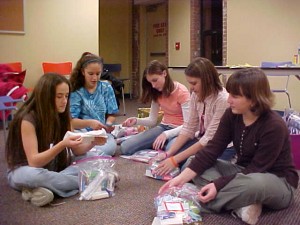Save Money with Online Tools
Wednesday, February 24th, 2010 Whether you have a big, volunteer-heavy fundraising event coming up, or just want to handle your regular supporter outreach duties more efficiently, you can save money and time by using easy-to use, free online tools.
Whether you have a big, volunteer-heavy fundraising event coming up, or just want to handle your regular supporter outreach duties more efficiently, you can save money and time by using easy-to use, free online tools.
1. Email is a friendly, most-often acceptable method of staying in touch with volunteers and supporters. Sure, some folks do not want unwanted emails clogging their inboxes—that’s why you always want to include an opt-out option in every email. You might be surprised how often a well-written, informative email from your organization will be opened by most of your email list. More important, emails are easy to forward and share—so you get more bang for your effort!
Make sure you capture emails from interested donors, supporters, and volunteers at every opportunity to build a solid email list.
2. Re-think expensive printing projects. Do you need to pay for the design, printing, and mailing of event announcements? If you wish to impress recipients with a nicely-done invitation to a big event, then consider skipping additional mailings. Will an email blast do for a save-the-date request and RSVP reminders?
3. Avoid another expensive mailing project next time you want to solicit donations for a special project or year-end campaign by allowing donors to give through your website. Replace the typical mailed letter and response envelope with a nicely-designed email containing a link to an online “Donate Now” button. There are dozens of online donation services available to nonprofits and charities. Just do a Google search and get started!
4. Promote it yourself! Garner support for your cause across town, throughout your region, and even around the world through online media and social networking sites. Facebook, Twitter, LinkedIn, and GroupMembersOnly are fantastic ways to create a buzz while creating community and informing potential supporters, donors, volunteers and clients who may not know about your organization. All are user-friendly, easy to set up and maintain, and not as time consuming as you may have heard. The effort you put towards social network promotion may surprise you!
Using free online tools to promote your event or fundraise for your nonprofit organization can save you time and tons of money!

 Developing a strong presence on social media outlets is a proven marketing tool for businesses and non profit organizations. Increasing awareness for your cause, making it easier for supporters to donate time and money, and promoting events are just a few ways that Facebook and Twitter are used successfully by non profits every day.
Developing a strong presence on social media outlets is a proven marketing tool for businesses and non profit organizations. Increasing awareness for your cause, making it easier for supporters to donate time and money, and promoting events are just a few ways that Facebook and Twitter are used successfully by non profits every day.



